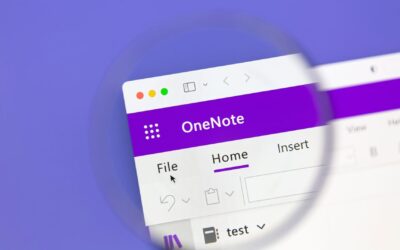As Economist Thomas Sowell says, “There are no solutions, there are only trade-offs, and you try to get the best trade-off you can get, that’s all you can hope for.” Sowell isn’t saying he doesn’t believe in solutions. He’s just realistic about how you may personally feel about the cost. For example, I’m not wild about the fees I pay Travelers Insurance, but I love the safety net. Atlanta traffic is almost always congested, consistently dangerous, and frequently swamped with accidents.
My policy protects me from many problems, including collision-related, plaintiffs’ lawsuits that could wipe me out financially. The policy is also sold and supported by an agent (now a dear friend) who calls me back within seconds and runs point on any claims. His follow-through has never waivered in the twenty years I’ve been working with him.
Nor have my payments to make sure the policy is up to date and renewed annually. These are benefits I can not pass up under any circumstances. The goal of this article is to borrow a page from my insurance analogy to help you better understand the merits of the warranties, renewals, and extended support options associated with the hardware and software in your IT environment. I don’t shy away from recommending flat out replacement either. Every piece of technology has a useful life.
For simplicity’s sake, I will explore business considerations across four primary technology categories: servers, backup appliances, firewalls, and workstations. I will incorporate archival examples from Integris’ Professional Services Automation system. Specific instances – with client names redacted – are informed by ticket notes, quotes, and email threads regarding warranties and renewals of extended support.
Finally, my recommendation criteria are based on an organization’s need for maximum security, access, and data retention. Downtime is one concern. Losing proprietary data or becoming a victim of wire theft are two other scenarios that require ongoing protective measures.
1 – Servers
The heart of your network consists of servers, firewalls, switches, data backup appliances, wireless access points, and uninterruptible power supplies. Your network also includes every other integrated product, service, and related application that makes up your digital estate: user devices, VoIP handsets, Internet access, and more.
If you are still using a premise-based server for any combination of file sharing, storage, and client-server software applications, this bedrock device, plays a critical role in optimizing your uptime. And the productivity of everyone who needs access.
According to Stephen Jones, Procurement Specialist for Integris, “Servers warranties can be very hit or miss. Many pre-configured ones will come with a basic warranty of some kind, usually six to twelve months. However, many times we order CTO Servers (configured to order), to accommodate for the unique needs of the client environment.”
He continues, “Since these builds are not standard stock, they usually need to have a warranty plan purchased separately. Standard warranties are one to three years depending on coverage, though I’ve quoted as far out as a five-year warranty before. Most manufacturers don’t offer warranties beyond five years due to the age of technology.” Until a business decides to migrate all of its file shares, storage, and applications to the cloud, a large upfront investment like a server ($5,000.00-$10,000.00) justifies full coverage for its entire useful life.
The aforementioned range assumes the inclusion of supplemental warranty coverage. I’ve seen one and two-year extended support quotes in the range of $500.00 to $1,000.00.Both fees seem like reasonable trade-offs compared to outcomes that could imperil your mission.
Here are a few compelling summary details from HP:
- Server Warranty Support Renewal – 1 Year
- Foundation Care Post Warranty – 1 Year Extended
- Service – 24 x 7 x 4 Hour – Onsite
- Maintenance – Parts & Labor – Physical Service
Can you tolerate two days of downtime? Most people can’t stand two hours of disruption. This plan obligates HP to show up onsite within four hours. Aging servers are flimsy and typically more vulnerable to intrusion. Have you considered the potential costs of a data breach? IBM pegs the average total cost at $3,860,000.00. (Data breaches also affect stock prices.)
2 – Backup Appliances
The leading causes of data loss are hard drive failure and user error. These are just a few of the reasons the marketplace has responded with so many advanced and redundant options to back up your data. Datto is a market leader in this space, offering one solution in particular that performs each of the following essential roles:
- Their onsite appliance backs up your data every fifteen minutes.
- Data gets backed up offsite in one or several geographically diverse data centers.
- Your backups are verified daily to ensure successful completion.
- They replicate your onsite network in the cloud, allowing you to run everything virtually for sixty days (at no extra charge) if your onsite systems fail.
This device and its industrial strength business continuity platform are integrated with all of your servers – both bare-metal and virtual “boxes” running VMware.
If anything in your server array fails, the Datto device will be working overtime to save the day. This is why the need for current coverage/support is so critical. Since client budgets for upgrades do not materialize out of thin air, we occasionally go through periods where less-than-ideal circumstances persist until project funding is available.
Once you review the following client IT risk summary; you should be able to confidently say, “I see the value of procuring an all-new backup device or springing for an extended warranty that would provide 24/7 onsite support within a four-hour window. If it’s available on a six-year-old device.” It probably isn’t. So take careful note of the engineer’s observations and recommendations from November 2020 BEFORE a significant overhaul and migration to the cloud were approved:
- There is an elevated temperature in the IT room, which will eventually cause problems for the server/host hardware.
- The server host/hardware is older, and the warranty for this device is expired.
- The operating system on the server hosting VMware and your line of business software (Microsoft Server 2008 R2) reached end of support in January 2020.
- Just like your Windows 7 workstations, Microsoft will no longer provide security updates or support for Server 2008. This is an increased security risk for not only the server but also the network-attached devices.
- The Datto device checks out okay with a significant caveat; the warranty expired in June 2016. The local machine is at 52% capacity. Optimally, it is best to keep the device at 50% or lower so we can spin up the server on that device in the case of a host or a VM failure.
- At 52%, it should be okay. If there are any hardware failures on this device, there is no warranty or support, so it will be an additional cost and time to repair. It is a RAID configuration, so one drive failure will not bring down the device, but it needs to be replaced.
Now let’s address the historical elephants in the room; the servers and the backup appliance are way past their prime. And the backup device is the lowest common denominator. When this goes, there’s no extra safety net.
There should be no skimping or procrastination on this foundational “sea wall.”
Workarounds due to server failure could last several days, negatively impact workflows, and create unpredictable expenses. And if the backup device fails, data loss expense could make all the other replacement and warranty cost conversations appear trivial.
3 – Firewalls
Firewalls provide a host of network services that include but are not limited to securing your network, configuring virtual private networks (VLANs), shaping and prioritizing traffic, allocating bandwidth, and enabling VPN services.
Like every device in our IoT world, firewalls run on software subscriptions that should not be permitted to lapse under any circumstances. Meraki Firewalls by Cisco require current support, or they stop working. Integris has had a few clients who ignored renewals, let them lapse, and their devices went offline.
This is one great reason NOT to have one person in charge of approving all IT recommendations. The lapses I speak of were at smaller organizations that didn’t have technology planning committees (at the time). These committees include representatives from each functional area of the business. This arrangement keeps everyone in the loop on a high level regarding the strategic business reasons for various technology recommendations while eliminating single points of failure. The renewal oversights also involved points of contact who were overseeing IT in addition to other primary job responsibilities, which consumed a lion’s share of their workday.
You can’t fault a multi-tasking operations/HR professional or office manager for missing important technical details from time to time. However, try not to let this happen to your organization. Meraki solutions are broader than firewalls and include switches, wireless access points, and cloud management capabilities.
And to stay current, it’s only about $500.00 per year. I don’t have a horse in this race, but I can barely contain my zeal for thinking this is worth every cent they are charging.
4 – Workstations
With usable life spans of three and four years, respectively, business-grade workstations (laptops and desktops) are not good prospects for extended coverage. These devices are often covered for a year or more by the manufacturer. It’s also standard for a new Lenovo laptop to include a three-year depot warranty for parts and replacement labor.
This means, in most cases, the machine will be retired by the time the warranty period ends. Unlike servers, workstations aren’t expected to last as long or to be in service, so they end up being a lower priority on extended warranty offers. Extended support makes the most sense under the following circumstances:
- The original warranty is short by default (one year or less)
- The machine is expected to be in commission for an extended period of time
- The asset is in the field – either all over town or the country – and more likely to incur damage
A few other trends suggest that merely replacing the item is a better course of action:
- Prices of laptops and desktops seem to be getting more competitive every year.
- After three or four years, extended coverage plans may not be adequate to keep the declining assets in good working order.
- You can save time and money by having a few cold spares available.
- As more computing power, storage, and file shares move to the cloud; users will be less tethered to workstations and more engaged with mobile devices like smartphones and tablets.
Next Steps?
A key question to ask yourself is, “To what extent could the failure of this asset put our mission on hold?” Failed servers, backup appliances, and firewalls can do a lot of damage, especially if they are out of commission for days at a time or have malfunctions that lead to a data breach. The same is true of a workstation if the user is storing IP and other valuable data on the hard drive. This happens to be a bad idea, but people still do it.
Is your server or any other essential appliance showing its age? If you have any questions about ways to decrease your reliance on depreciating business technology, the Integris team has decades of experience, and we look forward to guiding you.





